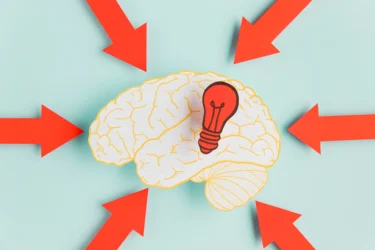Benefits of Padahastasana and How to Do it By Dr. Ankit Sankhe
By Dr. Ankit Sankhe +2 more

Get,

to manage your symptom
Get your,


4 Cr+ families
benefitted

OTP sent to 9988776655



You’ve successfully subscribed to receive
doctor-approved tips on
Whatsapp

Get ready to feel your best.

Hi There,
Download the PharmEasy App now!!


Register to Avail the Offer
Send OTPBy continuing, you agree with our Privacy Policy and Terms and Conditions

Hi There,
Sign up on PharmEasy now!!
Trusted by 4 crore+ families

OTP sent to 9988776655



You have unlocked 25% off on medicines




Code: NU25
By Dr. Ankit Sankhe +2 more
Table of Contents
Isn’t it thought provoking that yoga uses the body to heal the body? Yoga relies on your own body for strengthening it. It focuses on steady posture and relaxation of muscles. This is what makes yoga different from other exercises. Other forms of exercise focus primarily on external equipment and inducing stress on the body.
Indian saints developed the traditional methods of yoga to control the mind and bodily activities. Every human wishes to live in harmony with oneself. Physical, mental and spiritual balance is of utmost importance1.

Today, Yoga is globalized and is widely practiced in India and Western countries. People of all age groups, gender,s and nationalities practice yoga in various settings like schools, gyms, yoga studios, parks, homes, and temples. Yoga has become a profitable enterprise as its interest in people keeps increasing. Yogalates and Yogarobics are some of the modernized versions of yoga2.
Yoga often sees the practice of asanas, one of which is padahastana. Let us look at some interesting features and benefits of padahastasana.
Padahastasana is one of the asanas (pose) of surya namaskar. Surya means sun, and namaskar means salutation. Surya Namaskar comprises of breathing techniques (pranayama) and 7 asanas that are performed in cyclic order, thereby creating 12 asanas in total. Surya Namaskara includes 7 asanas like Pranamasana, Hastautthan Asana, Hastapad Asana, Ashwasanchalan Asana, Ashtang Namaskar, Bhujangasana and Parvatasana.
Pada means feet and hasta means hands. Therefore, padahastasana means keeping the palms down towards the feet4. Padahastasana is also called the hand-to-foot pose. It uses the breathing pattern of Ucchavasa, which refers to normal breathing. This means no exhalation or inhalation of breath, rather simple free breathing3.
Did You Know?
Padahastasana must be done properly for maximum health benefits. One may perform padahastasana in the following manner:
Some benefits of hand-to-foot pose are as follows:

Yogic postures like padahastasana may effectively control headaches. Sang in 2015 found that practising padahastasana may reduce headaches and the use of symptomatic medication. A clinical trial was conducted where migraine patients were using yoga conventional care for six weeks. The results suggested that people who practised this pose showed lesser frequency and intensity of headaches. However, if you have a severe headache for an extended period, you must consult your doctor5.

Yoga postures like padahastasana may help to improve concentration and memory. It may be helpful in the case of ADHD symptoms in preschoolers (Samantha et al., 2019). A clinical study5 on 100 students who practised yoga for about three months suggested significant improvement in attention, concentration and memory.

Short wavelengths of artificial blue light emitted by electronic gadgets may delay sleep by suppressing sleep-inducing hormones. A study5 showed that around 80% of participants using an electronic device for more than three hours a day experienced poor sleep quality. By reducing physiological arousal and inducing relaxation and positivity in the body, this asana may help to improve sleep. However, if you experience chronic sleep issues, you must get in touch with the doctor.

The practice of padahastasana may help to manage stress by reducing heartbeat and blood pressure. It may also reduce the body’s oxygen demand, thereby reducing the vulnerability to stress. Fang and Li conducted a clinical trial on a population of 120 nurses. It was divided into two groups. One group attended the Yoga program while the other group did not. After a six-month follow-up, it was found that the ones who participated in the yoga program had reduced stress levels5.

The practice of padahastasana may help to improve heart health and reduce the risk of heart disease. It may control blood pressure. A study5 by Manchanda, S.C. (2014) suggested that Yoga may maintain cholesterol and blood sugar levels. Patel and North conducted a trial of yoga practice in 34 subjects less than 75 years old. The result showed a significant reduction in blood pressure. However, you must consult your doctor in case of abnormal blood pressure.

This posture may help in the case of Irritable Bowel Syndrome (IBS). It includes abdominal pain, discomfort and bloating. A yoga module setup in a clinical trial6, comprised various breathing techniques and postures. Padahastasana was one of the postures. The results showed a possible connection between the postures and the IBS symptoms. However, if you experience severe symptoms of IBS, you must immediately consult your doctor.

Padahastasana may enhance the flexibility of hamstring muscles (muscles present at the back of the thighs). A study of 20 subjects suggested that padahastasana may improve hamstring muscle flexibility and reduce muscle tightness. However, further studies are required to confirm these claims7.

Practising a series of postures that include padahastasana may help in the case of type 2 diabetes. The practice of yoga may keep blood glucose levels in control. Nagarathna et al. conducted a study where the subjects performed a variety of asanas. Padhastasana was one of them. The result of the study8 suggested a reduced risk of type 2 diabetes in individuals who practised yoga regularly. However, you must check your sugar levels and consult your doctor in case of abnormal sugar levels.
Yoga practice may help develop the mind and body; however, it is still not an alternative to modern medicine. Therefore, you must not rely on Yoga alone to treat any condition. Instead, please consult a qualified doctor who will be able to assess your condition correctly and advise accordingly. Moreover, it is necessary to practice and learn Yoga under the supervision of a trained yoga teacher to avoid any injuries.
Practising Padahastasana, also known as the Forward Bend Pose, might have positive effects on your body’s flexibility and strength. By bending forward and reaching towards your toes, this yoga pose stretches the muscles in your back, hamstrings, and calves, increasing their flexibility.
Dr. Siddharth Gupta, B.A.M.S, M.D (Ayu)
Conditions where padahastasana should be done cautiously are:
With the guidance of a qualified and experienced yoga teacher/yoga expert, we can access and analyse the risk factors and continue to practice exercise with precautions.
In my experience, I have learned that Padahastasana might be effective in reducing excess abdominal fat. This yoga pose involves forward bending, which may help to stimulate the abdominal muscles and improve blood circulation in the area. With regular practice, Padahastasana can contribute to a reduction in abdominal fat and improve overall body strength and flexibility.
Dr. Rajeev Singh, BAMS
Padahastasana is one of the 12 poses of surya namaskar. Pada means feet; hasta means hands. Therefore, padahastasana means keeping the palms down towards the feet. It means hand-to-foot pose. Yogic postures like padahastasana may effectively control headaches, improve concentration, control sleep deprivation and manage stress. The practice of padahastasana may improve heart health by keeping blood pressure in control. Additionally, it may relieve the symptoms of Irritable Bowel Syndrome (IBS). It may also control blood sugar levels and improve the flexibility of hamstring muscles.
Also Read: Benefits of Matsyasana (Fish Pose) and How to Do it By Dr. Ankit Sankhe
Padahastasana is the hand-to-foot pose. Pada means foot, hasta means hand and asana meaning pose. Therefore, padahastasana translates to hand-to-foot pose in English4.
Padahastasana yoga pose may control headaches, improve concentration, control sleep deprivation and manage stress. It may improve the heart health by keeping blood pressure in control. Additionally, it may relieve the symptoms of Irritable bowel syndrome (IBS). It may also control blood sugar levels and improve the flexibility of hamstring muscles5,8.
First, stand straight with feet about 2 inches apart. Then inhale slowly and simultaneously raise your arms up. Then, stretch up the body from your waist. Exhale and slowly bend forward until your palms touch the ground. Make your back as straight as possible by stretching it. Maintain this posture for 10-30 seconds. Breathe normally at this time. Now inhale and slowly come up to an upright position and stretch your arms right above your head. Finally, exhale slowly and come back to the starting position. Relax in samasthiti (simple standing position)4.
People having cardiac disorders, vertebral and disc disorders, hernia, glaucoma, abdominal inflammation, ulcers, myopia, vertigo shall be cautious while performing padahastasana4.
Yes, padahastasana is one of the poses of surya namaskar.
1. Yadav SK, Kumar A, Kumar V, Kumar A. Importance of Yoga in daily life. Accessed on January. 2015;30:2019. Available from: https://www.researchgate.net/publication/278673574_IMPORTANCE_OF_YOGA_IN_DAILY_LIFE
2. Singleton M, Byrne J, editors. Yoga in the modern world. London: Routledge; 2008. Available from: https://www.taylorfrancis.com/books/edit/10.4324/9780203894996/yoga-modern-world-mark-singleton-jean-byrne
3. Nikam VM. A Role Of ‘Surya Namaskara’ For Good Health. Available from: https://www.aiirjournal.com/uploads/Articles/2020/03/4434_25.Vd.Manisha%20Nikam.pdf
4. 21 June INTERNATIONAL DAY OF YOGA INTERNATIONAL DAY OF YOGA Common Yoga Protocol, Ministry of Ayurveda, Yoga & Naturopathy, Unani, Siddha and Homoeopathy (AYUSH) [Internet] 4th Revised Edition, May 2019. [Cited: 2022 Sep 10] Available from: https://mea.gov.in/images/pdf/common-yoga-protocol-english.pdf
5. Sharma B, Pant K, Pant B, Sharma P, Thapliyal M, Sinha S, Pandey A, Chaudhary V, Verma D. ELECTRONIC DETOXIFICATION WITH YOGA AND MEDITATION. Available from: https://www.researchgate.net/publication/351618249_ELECTRONIC_DETOXIFICATION_WITH_YOGA_AND_MEDITATION
6. Kavuri V, Raghuram N, Malamud A, Selvan SR. Irritable bowel syndrome: Yoga as remedial therapy. Evidence-Based Complementary and Alternative Medicine. 2015 May 6;2015. Available from: https://www.hindawi.com/journals/ecam/2015/398156/
7. Paul A, Sasidharan AN, Majeedkutty NA. Effect Of Padahastasana In Improving Hamstring Muscle Flexibility Among Young Adults. Available from: https://www.worldwidejournals.com/international-journal-of-scientific-research-(IJSR)/article/effect-of-padahastasana-in-improving-hamstring-muscle-flexibility-among-young-adults/MTczMjI=/?is=1&b1=1&k=1
8. Chattopadhyay K, Mishra P, Manjunath NK, Harris T, Hamer M, Greenfield SM, Wang H, Singh K, Lewis SA, Tandon N, Kinra S. Development of a yoga program for type-2 diabetes prevention (YOGA-DP) among high-risk people in India. Frontiers in public health. 2020 Nov 17;8:548674. Available from: https://www.frontiersin.org/articles/10.3389/fpubh.2020.548674/full
Disclaimer: The information provided here is for educational/awareness purposes only and is not intended to be a substitute for medical treatment by a healthcare professional and should not be relied upon to diagnose or treat any medical condition. The reader should consult a registered medical practitioner to determine the appropriateness of the information and before consuming any medication. PharmEasy does not provide any guarantee or warranty (express or implied) regarding the accuracy, adequacy, completeness, legality, reliability or usefulness of the information; and disclaims any liability arising thereof.
Links and product recommendations in the information provided here are advertisements of third-party products available on the website. PharmEasy does not make any representation on the accuracy or suitability of such products/services. Advertisements do not influence the editorial decisions or content. The information in this blog is subject to change without notice. The authors and administrators reserve the right to modify, add, or remove content without notification. It is your responsibility to review this disclaimer regularly for any changes.
Comments

Leave your comment...
You may also like
Comments